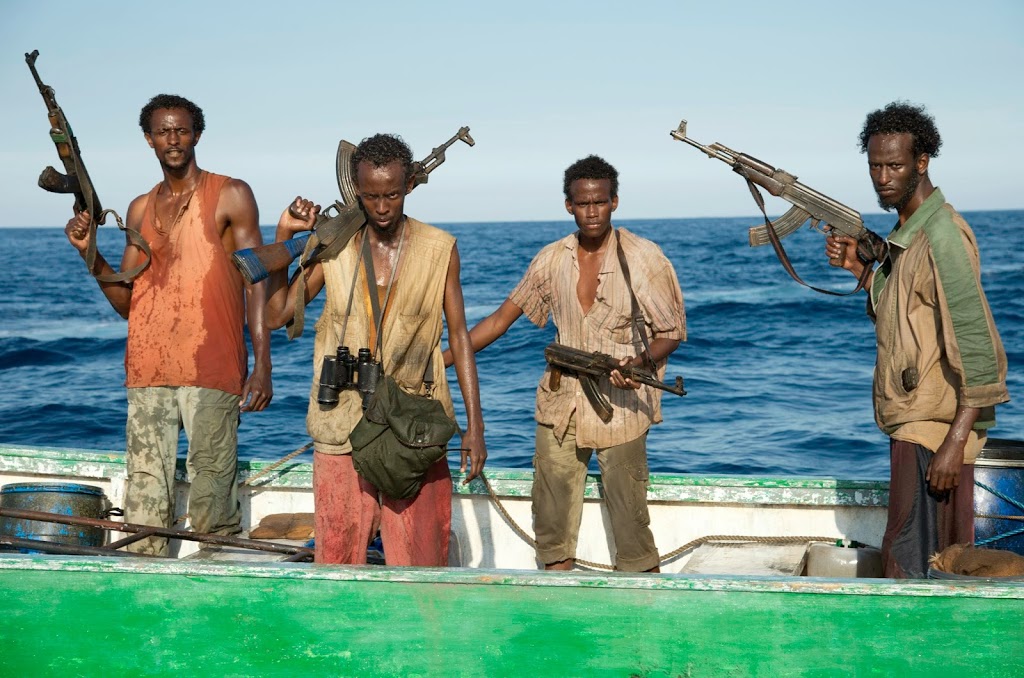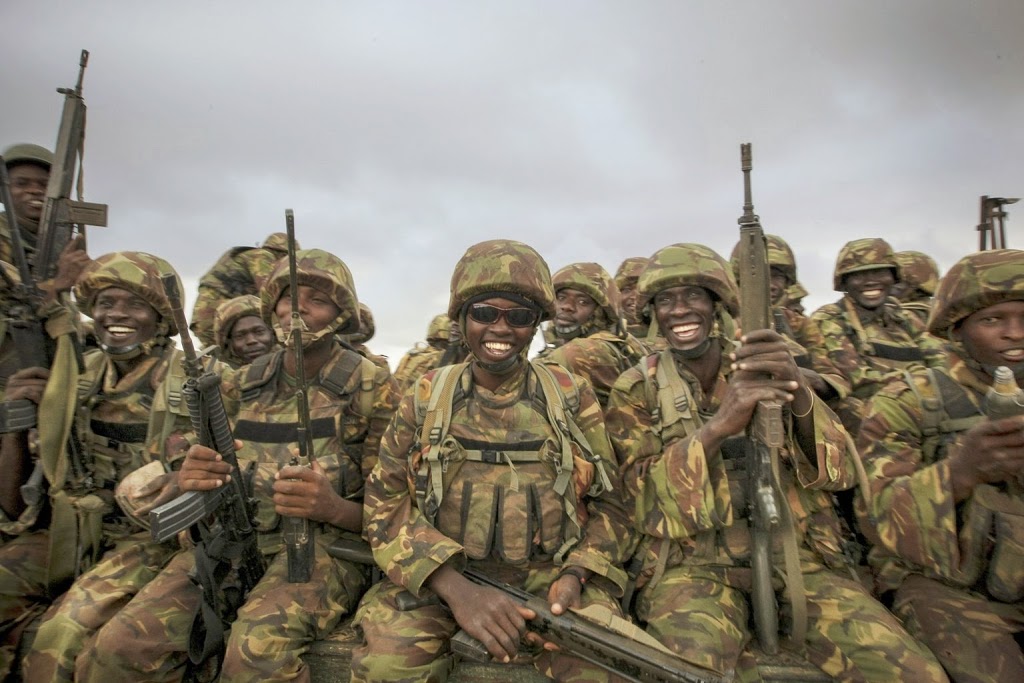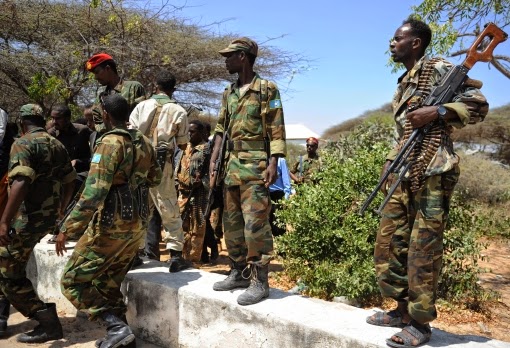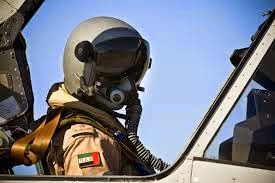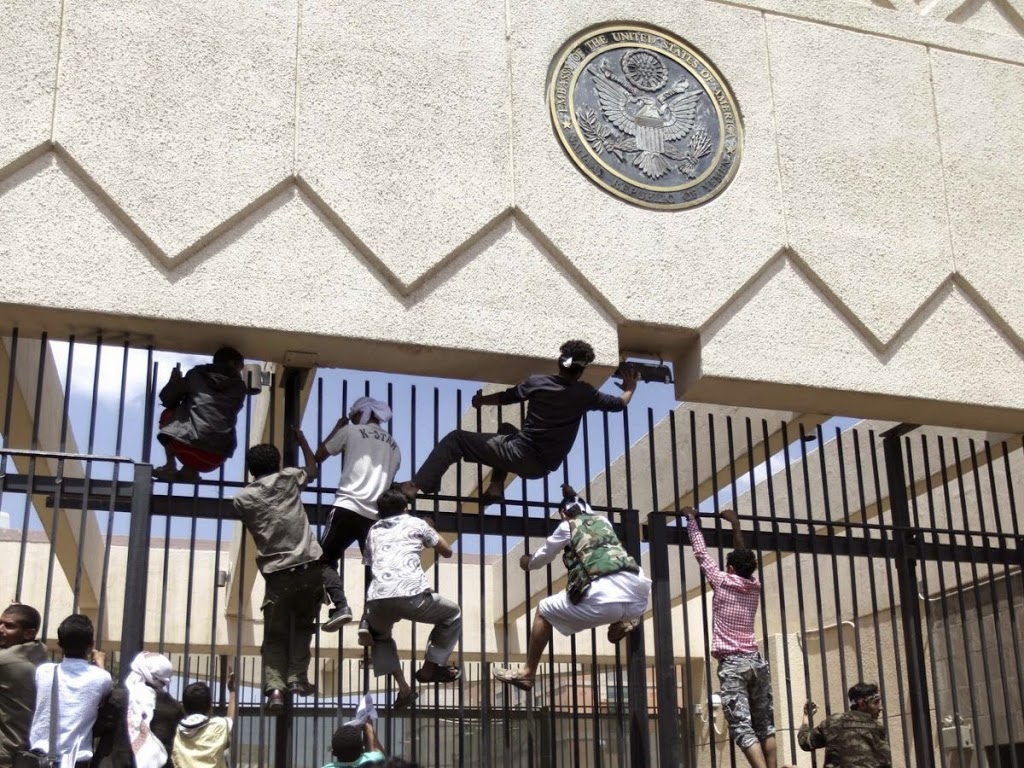Somalia: Al-Shabaab urges attacks on Western shopping malls
A video purported to be by Somalia’s al-Qaeda-linked rebel group al-Shabaab urged Muslims to attack shopping malls in the US, Canada, Britain and other Western countries.
US authorities said there was “no credible” evidence suggesting a US mall attack was in the works.
The threat by the al-Qaeda affiliate came in the final minutes of a more than hour-long video released Saturday in which the extremists also warned Kenya of more attacks like the September 2013 assault on the Westgate Mall in Nairobi in which 67 people were killed.
The masked narrator concluded by calling on Muslims to attack shopping malls, specifically naming the Mall of America in the Minneapolis suburb of Bloomington, as well as the West Edmonton Mall in Canada and the Westfield mall in Stratford, England.
The authenticity of the video could not be immediately verified by The Associated Press.
The FBI and Department of Homeland Security provided local law enforcement agencies and private sector partners with “relevant information regarding the recent al-Shabaab propaganda video,” DHS press secretary Marsha Catron said in a statement.
‘Not aware’
“However, we are not aware of any specific, credible plot against the Mall of America or any other domestic commercial shopping centre,” Catron said.
The Bloomington Police Department said additional security measures had been put in place at the Mall of America, one of the largest malls in the nation.
Speaking earlier on morning talk shows in the US, Department of Homeland Security Secretary Jeh Johnson called the video “the new phase” of the global terrorist threat and warned the public to be vigilant.
“These groups are relying more and more on independent actors to become inspired, drawn to the cause and they’ll attack on their own,” Johnson said, speaking on CNN’s “State of the Union”.
“I am very concerned about serious potential threats of independent actors here in the United States. We’ve seen this now in Europe, we’ve seen this in Canada.”
Asked about the specific threat against the Mall of America, Johnson said: “Any time a terrorist organisation calls for an attack on a specific place we’ve got to take that seriously. What we’re telling the public is you’ve got to be vigilant.
“There will be enhanced security there that will be apparent, but public vigilance, public awareness and public caution in situations like this is particularly important.”
Masked man
In the slickly produced video posted online, a masked man, his face wrapped in a black-and-white kaffiyeh-type scarf and wearing a camouflage jacket, declared: “Westgate was just the beginning.”
The video included footage from major news organisations showing the assault on the mall and said it was in reprisal for alleged abuses by Kenyan troops against Muslims in Somalia.
“What if such an attack were to occur in the Mall of America in Minnesota? Or the West Edmonton Mall in Canada? Or in London’s Oxford Street?” said the man, who spoke with a British accent and appeared to be of Somali origin.
The Mall of America said in a statement that it was “aware of a threatening video which includes a mention and images of the mall,” and said extra security had been put in place.
Minnesota Governor Mark Dayton was monitoring the situation and has been in regular contact with the commissioner of the Minnesota Department of Public Safety which is coordinating with federal and local law enforcement agencies and the Mall of America “to assure the safety of all Minnesotans,” said a statement released by the governor’s press secretary Matt Swenson.
Undeterred
Shoppers seemed undeterred Sunday by the threat.
“I’m more afraid of the cold today than any terrorists,” said Mary Lamminen, of St Paul.
David Modrynski said he talked with his wife and son about whether to visit the mall after hearing about the video.
“But we can’t stop living our lives because somebody says they’re going to do something,” Modrynski said.
While al-Shabaab has carried out attacks in neighbouring Kenya, Uganda and Djibouti, which all have troops fighting the extremists as part of the multinational African Union force, the al-Qaeda affiliate has never operated outside East Africa and the Horn of Africa.
Minnesota, home to the largest Somali population in the US, has been the target of terror recruiters in the past.
Since 2007, more than 22 young Somali men from Minnesota have travelled to Somalia to join al-Shabaab, and a handful of Minnesota residents have also travelled to Syria to fight with militant groups within the last year, authorities say.
At least one Minnesotan has died while fighting for the Islamic State group.
On Thursday, a 19-year-old Minneapolis man who was stopped at a New York City airport in November as he and three others were allegedly attempting to travel to Syria was indicted on charges associated with supporting the Islamic State group.
Counter terrorism
Last week, US Attorney Andy Luger led a Minnesota delegation, including law enforcement officials and Somali community leaders, to a White House summit on countering extremism and radicalisation. In his remarks, Vice President Joe Biden held up Minneapolis, Boston and Los Angeles as examples of communities moving ahead with programs to counter extremism locally.
In Kenya, the government dismissed the al-Shabaab video.
“They’re using propaganda to legitimise what cannot be legitimised. When you lead a group to go and attack a shopping mall and kill innocent shoppers that cannot be legitimised, those were not soldiers,” Interior Ministry spokesperson Mwenda Njoka said.
“Muslims also died in the Westgate attack. It’s in our interest to ensure Somalia is stabilised because the instability affects us. The video is cheap propaganda trying to re-write history and to get more support from those support them.”
Somalia: Shabab kill dozens at Central Hotel in Mogadishu
Somalia’s al-Qaeda-linked Shabab insurgents have killed at least 25 people in an attack on a popular hotel in the capital Mogadishu where government ministers and officials were holding Friday prayers.
Twin explosions followed by heavy gunfire were heard on Friday from the upmarket Central Hotel, close to the presidential palace, with the Islamist gunmen reportedly blasting their way into the fortified building before storming the complex.
An official at the presidential palace said at least 25 people were killed and the severity of injuries among the wounded meant the death toll was expected to rise.
Government sources said that the deputy mayor of Mogadishu and a member of parliament was killed, while the deputy prime minister and minister of transport were injured.
The hotel attack began with two explosions caused by a car bomb and a suicide bomber followed by gunmen who charged the building, with heavy gunfire heards as security forces took back control.
“The building was badly hit, the explosion was very big,” said police officer Abulrahman Ali.
“There were very many wounded people too, many of them seriously.”
Ali Hussein was close to the hotel when the attack took place.
“There were people covered in blood, I counted 10 dead bodies but that was only in one area,” he said.
Shabab militants claimed responsibility for the attack.
“Our fighters attacked the Central Hotel,” Shabab spokesman Abdulaziz Abu Musab. “The aim is to kill the apostate officials.”
Shabab rebels have staged a string of assaults in their fight to overthrow the country’s internationally-backed government.
The extremists say they are targeting government officials for permitting the deployment of foreign African Union troops on Somali soil.
United Nations envoy to Somalia Nick Kay condemned the “brutal terrorist attack” on the hotel.
“My heart goes out to those who have suffered. We stand firm with the Somalia people,” he said in a statement.
Somalia on the Mediterranean: Libya has become a breeding ground for terrorism
The Islamic State’s beheading of 21 Egyptian Coptic Christians in Libya, and Egypt’s subsequent airstrikes on Libyan soil, have relaunched debate over what to do about the mounting crisis in that country.
The situation in Libya — previously seen as a success of Western intervention and a victory for the heady, if unsteady, forces of democracy then erupting across the Arab world — has deteriorated steadily in the last few years. Libya is now a failed state ravaged by civil war, and a magnet for al Qaeda and Islamic State (IS) recruits.
The question is what the United States and its allies can do now to stop the hemorrhaging. Many options have been debated, but none look very promising.
Another international military intervention, as the Italians and Egyptians have recently proposed, would be very costly, unpalatable politically, and uncertain to work. Backing one faction against the others, as some urge, is almost certain to backfire.
The current approach, which relies on peace negotiations under the auspices of the United Nations, is unfortunately also a long shot and is unlikely to halt Libya from morphing into a terrorist safe haven teetering on the edge of a broader humanitarian crisis. At a minimum, that strategy must be complemented with a more serious effort to contain the spillover.
Libya’s lengthy and porous borders, a large unemployed and conservative youth population, the return of fighters from Syria and Iraq, and a surfeit of weapons raided from Qaddafi’s old casernes are turning Libya into a hot spot for would-be jihadis .
Libya is likely now home to more IS fighters than any other country besides Iraq and Syria. IS has actively sought to compete with al Qaeda’s regional franchise, al Qaeda in the Islamic Maghreb, for influence on the ground. IS leader Abu Bakr al-Baghdadi has openly challenged the legitimacy of other groups, including al Qaeda, in Libya.
But the competition hasn’t exhausted their ranks: Both are fighting alongside and against locally focused jihadi groups such as Ansar al-Sharia, the group responsible for the September 2012 attack on the U.S. diplomatic facility in Benghazi that killed Amb. J. Christopher Stevens and three other Americans.
The spread of terrorist groups in Libya is a direct consequence of the collapse of the Libyan state, itself a result of the international community’s failure to support Libya’s post-conflict reconstruction. The United States and its allies that backed Qaddafi’s overthrow share the blame for Libya’s condition. President Barack Obama himself admitted in an August 2014 interview with the New York Times’s Thomas Friedman that the U.S. failure to help the Libyans in the aftermath of Qaddafi’s overthrow was one of his biggest foreign-policy regrets. Needless to say, U.S. and European embassies have departed.
The country is now divided between two governments. The government in Tripoli is made up of conservative Islamists, who claim the mantle of the revolution. The government in Tobruk represents more moderate forces and is recognized by most other countries.
Both sides have aligned with military forces — “Libya Dawn” for Tripoli, and the “Libyan National Army” for Tobruk. But all sides are fractured internally. To make matters worse, regional powers, especially Egypt, but also Gulf states and Turkey, have supported one side against the other — a fact that will make it difficult for Egypt to argue that its airstrikes were solely aimed at targeting the Islamic State.
Forces aligned with Tobruk have acknowledged help from Egypt, the United Arab Emirates, and Saudi Arabia in their “war on terrorism,” but they have denied the claims that the Egyptian military is conducting airstrikes at their behest and countered that Qatar, which supplied rebel forces with weapons during the initial revolt, has been supplying arms to Libya Dawn.
Libya, in other words, is now a proxy war for the broader conflict between militarism and Islamism playing out across in the Middle East and North Africa, as vulnerable to further IS inroads as Syria was a year ago.
Of equal concern is the drop in oil production due to the fighting. In a country that relies almost exclusively on proceeds from oil to pay salaries and import many basic needs, a continued decline in oil production could eventually portend an even more devastating economic and humanitarian crisis.
Yet despite all these grim omens, the international approach to Libya has changed little since Qaddafi was killed. Attention, resources, and the level of interest have all been limited. U.S. policy is at best unclear. In part, this is because of the crises in Ukraine, Syria, and Iraq, which dominated the headlines in 2014. But it is also because the choices are so unpalatable.
One option is to intervene again to enforce a peace.
To work, however, this would require, at a minimum, authorization from the U.N. Security Council, much greater cooperation from regional powers, significant air power, and tens of thousands of Western troops — possibly more — for post-conflict stabilization. In other words, it would be a multiyear commitment akin to those in Iraq and Afghanistan.
In this day and age, Washington and European capitals are united in their desire to avoid any such scenario at all costs — in Libya or elsewhere. Egypt has called for a U.N. intervention. This might have worked three years ago, when Libya was at peace, but the United Nations is hardly prepared now for a forced-entry military operation.
Some observers have therefore argued that the United States and its allies should pick sides and offer military backing to the Libyan National Army and Gen. Khalifa Haftar.
But this is also unsound. Not only are the moderate factions far from unified, but the Islamists have deep roots and by many counts enjoy greater national support as the real heirs to the 2011 anti-Qaddafi revolt. At best, a strategy of supporting the moderates would succeed only in leveling the playing field and creating a painful stalemate that might be conducive to negotiation. At worst, it would alienate many moderate Islamic factions, intensify the violence, and turn millions of Libyans against the West for no gain.
Facing these dire options, the United States and its allies have settled on a policy of containment by default, in hopes that buying time will allow a breakthrough in U.N.-sponsored peace negotiations in Geneva. Unfortunately, this strategy is also unlikely to work.
To succeed, the Geneva negotiations need support from regional powers and political factions that can control their forces on the ground, not to mention that have a basic willingness to compromise. On all three fronts, there is little reason to be optimistic. A cease-fire announced in mid-January quickly fell apart. Regional powers like Egypt will continue to add fuel to the fire and are unlikely to agree to support a settlement in which the (non-jihadi) Islamist factions from Misrata are a major signatory. Even with an agreement, spoilers such as Ansar al-Sharia — and now IS — would almost certainly continue to stoke the violence with guerrilla and terrorist attacks.
In the best case, a successful negotiated agreement would need the backing of a large U.N. interim security force to have any real chance of holding. In other words, even with a peace settlement, an intervention of some kind would likely be necessary to make the peace stick — although a peace agreement would make an intervention much easier.
Given the dim prospects for a negotiated settlement that holds in the near term, more meaningful efforts to contain the crisis are needed.
More military assets from the United States, its allies, and regional partners — for intelligence, surveillance, reconnaissance, border monitoring, and other tasks — should be devoted to Libya. These must be complemented by active political and diplomatic efforts to shore up Libya’s neighbors — especially Tunisia, but also Egypt — even while pressuring Cairo to distance Egypt from its proxies and working to bring levels of violence in Libya down overall.
At the same time, the tempo of counterterrorism operations within Libya itself will inevitably need to increase as the Islamic State gains adherents, weapons, and potentially other forms of support from “core IS” in Syria and Iraq. Here, the United States will have to play a leading role.
Whether or not the United States is prepared to do anything more in Libya, even on this smaller scale, remains to be seen. But the hands-off policy the West has pursued in Libya since Qaddafi’s death isn’t working. Four years after Libya threw off the yoke of a 42-year dictatorship, the outlook for the country has gone from bad to worse to dire.
Despite the many other problems in the world, something must be done to stem three years of hemorrhaging in a country that once promised to be one of NATO’s greatest successes. Otherwise, Qaddafi’s son’s prediction that Libya would become the “Somalia of the Mediterranean” seems likely to come true, with serious consequences for security across North Africa and into Europe.
Source: FP
United States to allow export of armed drones
The United States said late on Tuesday that it will allow for the first time the widespread export of armed drones to some allied countries as part of its global counterterrorism fight. Armed drones are a cornerstone of Washington’s battle against extremists in Afghanistan, Pakistan, Somalia, Syria, Iraq and Yemen, although they remain hugely controversial and opponents say they frequently kill or maim civilians.
“The United States is the world’s technological leader in the development and deployment of military Unmanned Aerial Systems (UAS, or drones),” the State Department said in a statement.
“As other nations begin to employ military UAS more regularly and as the nascent commercial UAS market emerges, the United States has a responsibility to ensure that sales, transfers, and subsequent use of all US-origin UAS are responsible and consistent with US national security and foreign policy interests, including economic security, as well as with US values and international standards.”
The statement did not say which countries would be customers, but several allies are eager to get their hands on the hardware, with The Washington Post citing Italy, Turkey and the Persian Gulf.
So far, the United States has sold its armed drones only to close ally Britain, the newspaper said.
Source: thenews.com.pk
20 Shabaab militants killed in airstrike on S. Somalia
Around 20 Al-Shabaab militants were killed on Monday in an airstrike carried out near the southern Somali town of Merca, a local official has said.
“We received reports that a foreign warplane had bombed an Al-Shabaab camp near Merca, leaving 20 militants dead and destroying cars and boats used by the group,” Abdukadir Mohamed Sidi, governor of the Lower Shabelle region, told The Anadolu Agency.
He did not specify, however, the source of the reports or the origin of the warplane that struck the Al-Shabaab camp.
There has been no comment yet from Al-Shabaab regarding the reported airstrike.
Al-Shabaab has recently suffered several significant blows, losing most of its strongholds in southern and central Somalia to government and African Union troops.
Several group members have also recently been killed in U.S. drone strikes.
Somalia’s Puntland says 10 Al-Shabaab fighters killed in clashes
Forces from Somalia’s semi-autonomous region of Puntland killed at least 10 al-Shabaab fighters in clashes at the Galgala mountains on Friday.
Two soldiers were killed and six others injured, Puntland Security Minister Hassan Osman Alore told reporters in the capital, Garowe. The fighting broke out when the Islamist militants kidnapped pastoralist civilians, he said.
Al-Shabaab has been routed from some strongholds in Somalia by African Union troops even as it continues attacks in the Horn of Africa nation.
Last month, Puntland President Abdiweli Mohamed Ali said troops seized an al-Shabaab base in the Galgalas.
What has happened to the fight against Somalia’s al-Shabab?
News on Somalia has gone strangely quiet in recent weeks. Somali piracy is in retreat. Since 2009 the High Risk Area off the Somali coast suffered over 700 attacks from pirates, but last year there were only 11 pirate incidents and not a single ship hijacking.
Attacks have driven the al-Qaeda affiliated Somali rebel movement (al-Shabab) out of Somali cities and ports.
The operation, under the auspices of the African Union, has been a remarkable success. A detailed report in the Military Balance – just published by the International Institute for Strategic Studies (IISS) – indicates how this was done. Operation Indian Ocean, from August to November last year, saw troops from Uganda, Kenya, Ethiopia, Djibouti and Burundi undertaking co-ordinated operations against al-Shabab. Linked by the African Union Mission in Somalia (AMISOM) it succeeded in displacing the rebels from key strongholds.
But, as the Military Balance points out, “the group still has the potential both to slow AMISOM’s progress through its use of asymmetrical tactics and to conduct attacks on Somali and foreign targets”. To show just how much the African forces still have to do to defeat al-Shabab, a helpful map is included showing large areas of the country in a dark grey – regions in the north, centre and south of Somalia are still firmly under rebel control.
The real problem is that AMISOM is – as the report makes plain – “about 15,000 troops short of the strength believed required for concurrent operations to clear Somalia of al-Shabab.” At least as worrying is the fact that international donors are beginning to tire of the burden. Running the operation is costing $50m a month, and given the demands of Ukraine, Syria, Nigeria and the other international crises, this is a budget drain western militaries would love to be rid of.
But the International Institute for Strategic Studies report is as opaque as it is helpful.
For some reason there is not a word about the other major player in Somalia – the United States. The US military maintain a vast base in neighbouring Djibouti – Camp Lemonnier. From this 500 acre site the US operates missions across the region – many of them inside Somalia.
US drone strikes (also operated from an American base in Ethiopia) have been remarkably successful. Since September last year drones have killed senior Al Shabab figures including its leader Ahmed Abdi Godane and most recently its intelligence chief Yussuf Deq. The Somali government would like to see these stepped up.
Also omitted from the Military Balance is any indication of where al-Shabab obtains its funding. Asked whether the IISS has any evidence of Qatari financing of the movement (or of Boko Haram in Nigeria) Dr John Chipman, the centre’s director-general, said they had none.
If this is really the case it is a strange lapse.
In 2013 the US Treasury placed an adviser to the Qatar government – Abd al-Rahman bin Umayr al-Nuaymi – on a sanctions list. In October last year Britain (rather belatedly) followed suit.
The Americans accused Umayr al-Nuaymi of being a vital financier for al-Qaeda affiliates in a number of countries, including Somalia. “Nuaymi is a Qatar-based terrorist financier and facilitator who has provided money and material support and conveyed communications to al-Qaeda and its affiliates in Syria, Iraq, Somalia and Yemen for more than a decade”. This is not the sort of activity to have escaped the notice of Qatari security officials.
The Qatari government is also accused by the UN Monitoring Group on Somalia of using its vast wealth to buy influence inside the country. In their 2013 report the Monitors found that Qatar both funded the election campaign of President Hassan Sheikh Mohamud and bought votes for the president by bribing MPs. Qatar is also reported by the UN to have “facilitated” negotiations between the Somali government and Hassan Dahir Aweys, then part of the al-Shabab’s military infrastructure.
But this is a murky world and since 2013 there appears to have been some falling out between al-Shabab and Qatar. In May 2013, a suicide attack was carried out inside Mogadishu, aimed at a government convoy transporting high-level officials from the Qatari security service. In June 2013, Aweys was taken into custody by Somali security forces, in circumstances that are still unclear.
What is certain is that al-Shabab remains undefeated and is still a real threat, not just to Somalia, but to the region as a whole. The decline in Somali piracy and the setbacks the rebels have suffered has reduced the international focus on the country. It would be a costly mistake if the west walked away from Somalia at this critical juncture.
United Arab Emirates to West allies: we need more weapons for Islamic State fight
Lt. Col Hassan Ali Alanazi of the UAE Air Force said that his country is ready to ratchet up military operations against rebels and terrorists in Libya, Yemen, Somalia, Afghanistan and Syria, but wants more weapons from allied nations — including the United States.
The UAE, which has joined in global military operations in several nations, is currently partnered with Jordan, Saudi Arabia, Bahrain and the United States in a bombing campaign, dubbed Operation Inherent Resolve, to take out the Islamic State in Syria. But to be most effective, the UAE needs more aid, Mr. Alanazi said, United Press International reported.
“We want to increase our combat effectiveness with more weapons or advanced weapons that we’re looking for so we can do our job in a better way,” he said during a recent address at the Air Force Association’s Air Warfare Symposium and Technology Exposition in Orlando, Florida, UPI reported. “And I hope that by helping us, we’re helping the whole coalition forces.”
The UAE’s renewed interest in fighting the Islamic State comes after the terror group burned a Jordanian pilot alive.
“What we need from our partners today, for future exercises, is to concentrate on training the support aspects of the missions,” Mr. Alanazi said, UPI reported. “And what I mean by that is we need to concentrate on intelligence, maintenance, weapons, logistics — and it needs to be treated equally, like we treat the flying partner.”
US closes Yemen embassy, following Somalia, Syria and Libya
Violence in Sanaa, the capital city in Yemen, has been increasing after the al-Houthi ethnic group completed its coup last week, and took complete control of Yemen’s government.
Anti-Houthi demonstrations have been growing, and Houthi militias have been using force to disperse crowds. The al-Houthis are an Iran-backed Shia militia, and their slogan is: “God is the Greatest. Death to America. Death to Israel. Damn the Jew and Victory to Islam.”
Fearing an assault, the U.S. on Tuesday closed its embassy in Sanaa and evacuated all personnel. As soon as U.S. officials left the capital, the Houthis seized more than 20 vehicles from the evacuated embassy.
Yemen is the home of Al-Qaeda in the Arabian Peninsula (AQAP), which the U.S. has been fighting with the cooperation of the preceding government. It is not clear whether the new al-Houthi government will agree to continued attacks on AQAP, particularly the drone strikes, but the al-Houthis themselves also would like to see AQAP defeated.
Yemen becomes the third Arab country to lose its American embassy since December 2010, when the “Arab spring” began, creating turmoil in one country after another throughout the Mideast. The Syrian war forced the closure of the US embassy in Damascus in February 2012, and the dissolution of Libya’s government forced the closure of the embassy in Tripoli in July 2014.
On January 8, 1991, looters in the army of the government of Somalia fired rocket grenades in the capital city Mogadishu, leading to the famous “Blackhawk down” incident. The U.S. embassy was closed, and all diplomats and employees were evacuated.
In July of last year, President Obama appointed Omar Abdirashid Ali Shamarke to be the first U.S. ambassador to Somalia since 1991. However, Sharmarke will work out of the American embassy in Nairobi, Kenya.
- « Previous Page
- 1
- …
- 221
- 222
- 223
- 224
- 225
- …
- 229
- Next Page »



